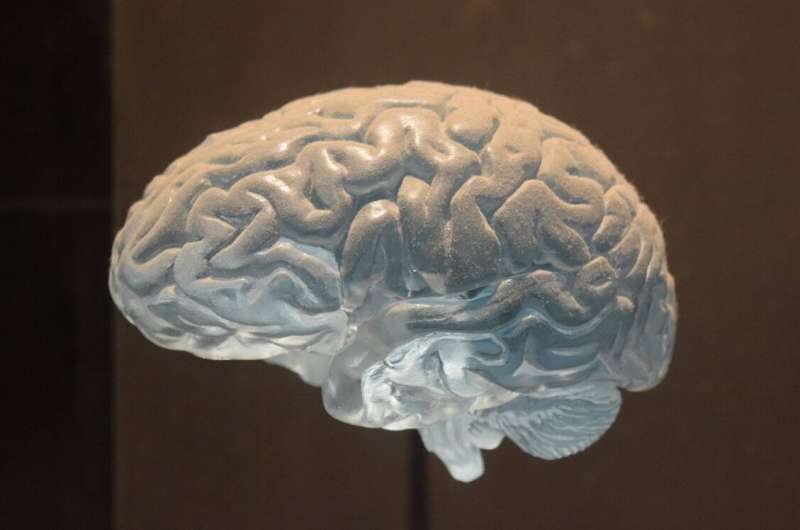This article has been reviewed according to Science X's editorial process and policies. Editors have highlighted the following attributes while ensuring the content's credibility:
fact-checked
peer-reviewed publication
trusted source
proofread
Scientists record powerful signal in the brain's white matter

The human brain is made up of two kinds of matter: the nerve cell bodies (gray matter), which process sensation, control voluntary movement, and enable speech, learning and cognition, and the axons (white matter), which connect cells to each other and project to the rest of the body.
Historically, scientists have concentrated on the gray matter of the cortex, figuring that's where the action is, while ignoring white matter, even though it makes up half the brain. Researchers at Vanderbilt University are out to change that.
For several years, John Gore, Ph.D., director of the Vanderbilt University Institute of Imaging Science, and his colleagues have used functional magnetic resonance imaging (fMRI) to detect blood oxygenation-level dependent (BOLD) signals, a key marker of brain activity, in white matter.
In their latest paper, published Oct. 12 in the Proceedings of the National Academy of Sciences, the researchers report that when people who are having their brains scanned by fMRI perform a task, like wiggling their fingers, BOLD signals increase in white matter throughout the brain.
"We don't know what this means," said the paper's first author, Kurt Schilling, Ph.D., research assistant professor of Radiology and Radiological Sciences at VUMC. "We just know that something is happening. There truly is a powerful signal in the white matter."
It is important to pursue this because disorders as diverse as epilepsy and multiple sclerosis disrupt the "connectivity" of the brain, Schilling said. This suggests that something is going on in white matter.
To find out, the researchers will continue to study changes in white matter signals they've previously detected in schizophrenia, Alzheimer's disease and other brain disorders. Through animal studies and tissue analysis, they also hope to determine the biological basis for these changes.
In gray matter, BOLD signals reflect a rise in blood flow (and oxygen) in response to increased nerve cell activity.
Perhaps the axons, or the glial cells that maintain the protective myelin sheath around them, also use more oxygen when the brain is "working." Or perhaps these signals are somehow related to what's going on in the gray matter.
But even if nothing biological is going on in white matter, "there's still something happening here," Schilling said. "The signal is changing. It's changing differently in different white matter pathways and it's in all white matter pathways, which is a unique finding."
One reason that white matter signals have been understudied is that they have lower energy than gray matter signals, and thus are more difficult to distinguish from the brain's background "noise."
The VUMC researchers boosted the signal-to-noise ratio by having the person whose brain was being scanned repeat a visual, verbal or motor task many times to establish a trend and by averaging the signal over many different white matter fiber pathways.
"For 25 or 30 years, we've neglected the other half of the brain," Schilling said. Some researchers not only have ignored white matter signals but have removed them from their reports of brain function.
The Vanderbilt findings suggest that many fMRI studies thus "may not only underestimate the true extent of brain activation, but also … may miss crucial information from the MRI signal," the researchers concluded.
More information: Kurt G. Schilling et al, Whole-brain, gray, and white matter time-locked functional signal changes with simple tasks and model-free analysis, Proceedings of the National Academy of Sciences (2023). DOI: 10.1073/pnas.2219666120



















